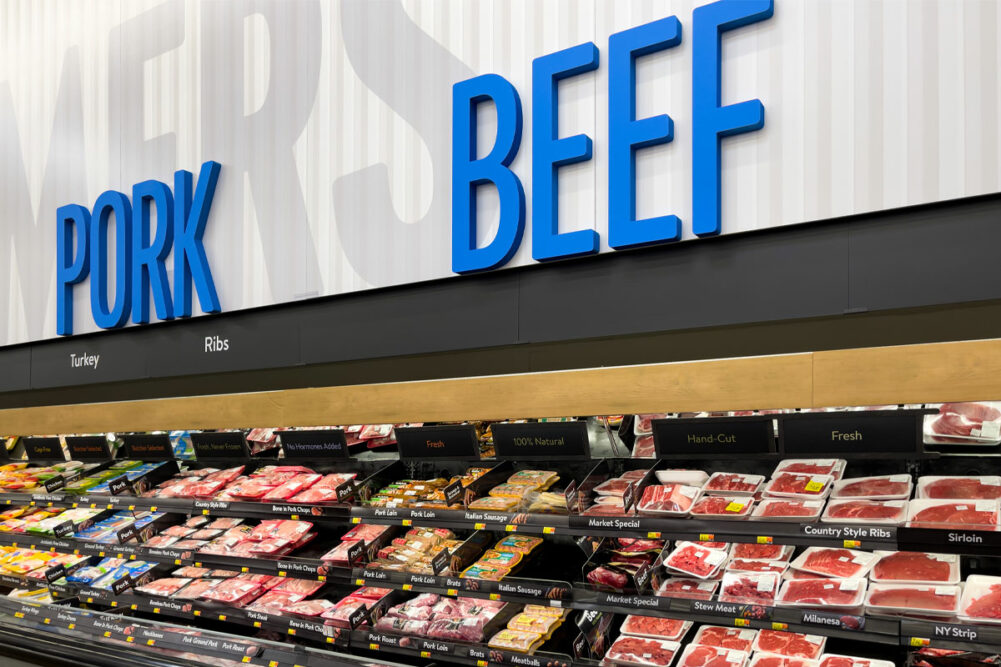KANSAS CITY — The US beef industry is amid one of its largest two-year declines in beef production that will have significant ramifications for everyone from consumers to cattle producers.
Consumers will face higher retail prices than they did in 2023. Beef processors will struggle to make money unless they get a lot more for their beef than they did at the end of 2023. Cattle feeders will see sharply higher live cattle prices because of the reduction in cattle supplies due to ongoing beef cow herd liquidation. All of this will make it even harder for beef packers to make money this year.
This year may be even more challenging for packers than 2023 because US cow-calf producers continue to reduce their herds. Packers and analysts expected to see signs of a rebuild of the beef cow herd early last year as prices for all classes of cattle began to move higher. But those signs did not materialize, as Donnie King, president and chief executive officer of Tyson Foods, told analysts last November. His remarks came after Tyson reported that its Beef segment had an operating loss of $323 million in its fourth quarter ended Sept. 30, 2023, against income of $375 million in the fourth quarter of 2022. It meant an operating loss for fiscal 2023 of $91 million, versus income of $2.502 billion. This was Tyson Beef’s first annual loss since 2015, when it reported an operating loss of $66 million. Its previous largest loss was $244 million in 2006.
JBS Beef North America, in contrast, posted a healthy profit in its 2023 third quarter. But for its US beef division, a shortage of cattle for slaughtering will remain a challenge in the fourth quarter and in 2024, director Wesley Batista Filho told analysts. The unit’s adjusted EBITDA in the quarter was $103 million, with an adjusted EBITDA margin of 1.7%. EBITDA in the 2022 third quarter was $481.1 million for an 8.7% margin. Beef margins in North America during the quarter suffered a material impact compared to the previous year as changes in market conditions due to the turn of the cattle cycle in that region, JBS said. The situation reduced the availability of animals for processing and therefore increased costs, the company said.
Pork, poultry to get a boost
The US Department of Agriculture’s forecasts at the end of November 2023 were for 2024 US beef production to total 25.810 billion lbs, down 1.122 billion lbs, or 4.2%, from an estimated 26.932 billion lbs in 2023. It would be down 2.481 billion lbs, or 8.8%, from 28.291 billion lbs in 2022.
In contrast, pork and broiler production this year will both increase slightly from 2023, according to the Economic Research Service (ERS) of the USDA. It forecasts pork production at 27.730 billion lbs, up 513 million lbs, or 1.9%, from 2023. It forecasts broiler production at 46.65 billion lbs, up 441 million lbs, or 1%, from 2023.
Beef’s sharp decline means red meat and poultry production in 2024 will be an estimated 106.529 billion lbs, down 76 million lbs, or 0.1%, from 2023, according to the ERS. It also means that disappearance (consumption) of red meat and poultry will be 224.1 lbs per person this year, versus 225.2 lbs in 2023. Beef will see a significant decrease to 55.6 lbs per person from 57.9 lbs last year and 59.1 lbs in 2022. Beef and veal exports will decline this year by 190 million lbs from 2023, while imports will increase by only 37 million lbs. Any increase in imports in the next two years is expected to fall far short of filling the decrease in beef production and exports.
The sharp reduction in beef production will be due to reduced cattle numbers again this year. The Jan. 1, 2023, total of 89.274 million head was down 2.803 million head, or 3%, from the prior year. This year’s Jan. 1 total may be down another 1.5 million head and likely would represent the low in total inventories in the current cattle cycle. But analysts said any rebuilding of the beef cow herd will not begin until 2025 at the earliest. The reasons are numerous but key factors include drought and economic drivers such as high input costs, interest rates and financial recovery.
The catastrophic drought from 2010 through 2012 led to the closing of nine beef processing plants. Industry-wide capacity by 2016 declined to 125,500 head per day from 139,000 head per day in 2010, according to Cattle Buyer’s Weekly data. But the capacity total now has increased considerably from that low. The largest 71 beef processing plants in the United States currently have capacity to process 134,705 head per day. Even using a more conservative estimate of maximum daily capacity of 128,000 head, it is clear the industry is saddled with excess capacity. The 128,000 head total would mean a maximum slaughter total of 640,000 head over five days or 704,000 head over 5.5 days.




